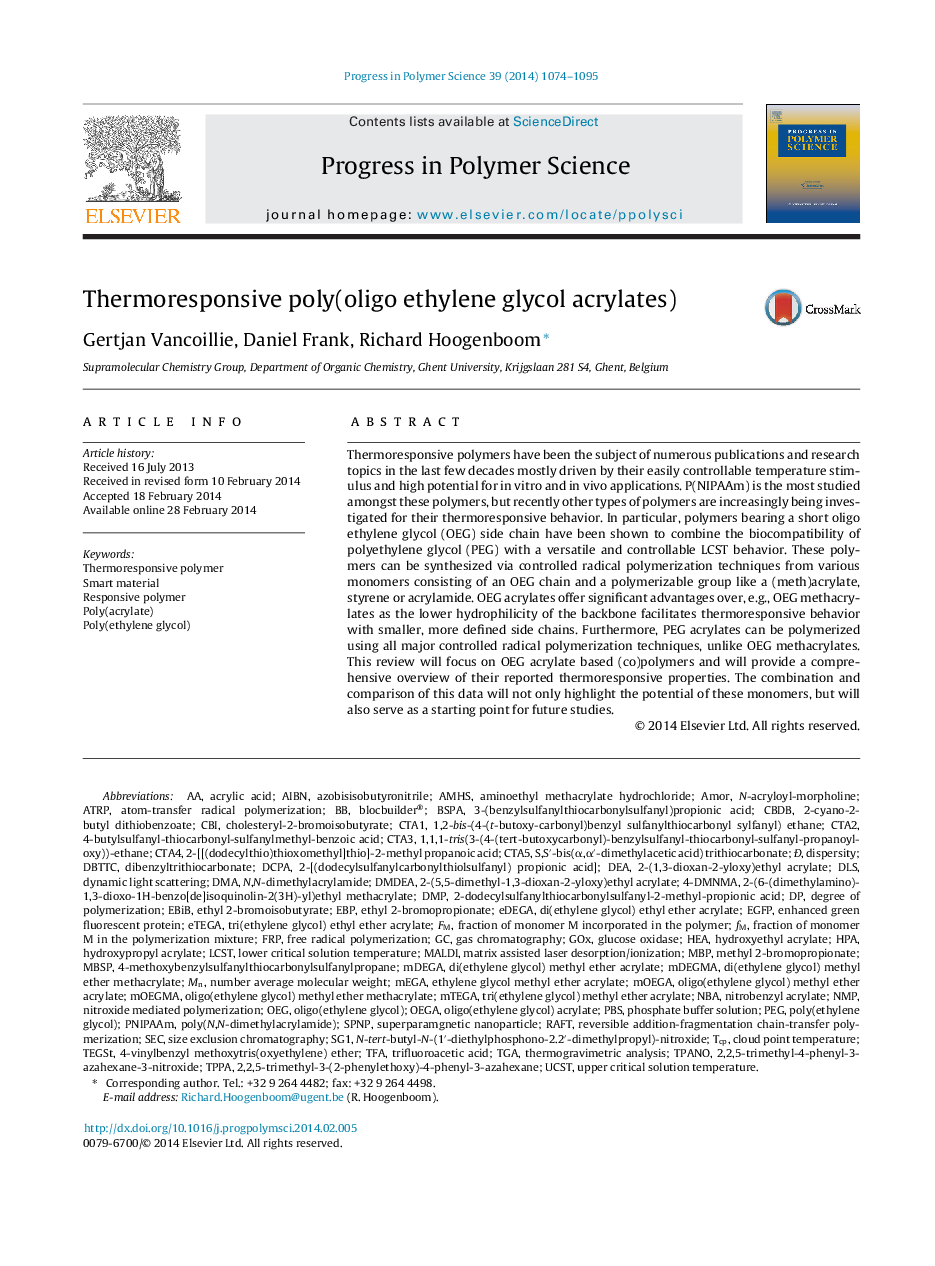| Article ID | Journal | Published Year | Pages | File Type |
|---|---|---|---|---|
| 5208288 | Progress in Polymer Science | 2014 | 22 Pages |
Thermoresponsive polymers have been the subject of numerous publications and research topics in the last few decades mostly driven by their easily controllable temperature stimulus and high potential for in vitro and in vivo applications. P(NIPAAm) is the most studied amongst these polymers, but recently other types of polymers are increasingly being investigated for their thermoresponsive behavior. In particular, polymers bearing a short oligo ethylene glycol (OEG) side chain have been shown to combine the biocompatibility of polyethylene glycol (PEG) with a versatile and controllable LCST behavior. These polymers can be synthesized via controlled radical polymerization techniques from various monomers consisting of an OEG chain and a polymerizable group like a (meth)acrylate, styrene or acrylamide. OEG acrylates offer significant advantages over, e.g., OEG methacrylates as the lower hydrophilicity of the backbone facilitates thermoresponsive behavior with smaller, more defined side chains. Furthermore, PEG acrylates can be polymerized using all major controlled radical polymerization techniques, unlike OEG methacrylates. This review will focus on OEG acrylate based (co)polymers and will provide a comprehensive overview of their reported thermoresponsive properties. The combination and comparison of this data will not only highlight the potential of these monomers, but will also serve as a starting point for future studies.
